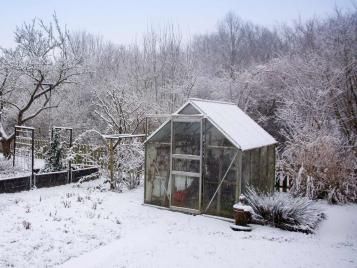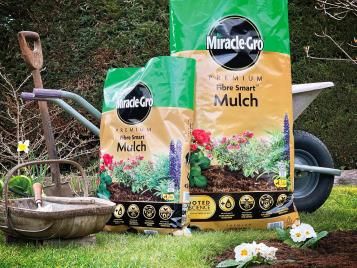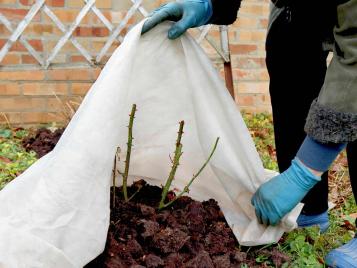Totally hardy plants need little or no winter protection, but borderline hardy, tropical and sun-loving Mediterranean plants may need a little TLC to get them through the winter months unscathed. Even some so-called ‘hardy’ plants can be vulnerable in colder regions and gardens exposed to strong, cold winds. The word ‘hardy’ is relative to where you are in the country and how severe and for how long the freezing weather continues.
Even newly planted hardy plants can be damaged or killed in a prolonged cold spell, especially when there are cold winds, while new growth put on in early spring during a period of mild weather is vulnerable to scorch if the weather turns colder later.
It’s not only the depth of the cold period, but its length – freezing conditions that go on for several weeks will be more damaging than similar or even worse conditions for just a couple of days.
Place tender plants under glass
Plants that will not tolerate low or close to freezing temperatures, such as most of our perennial summer bedding plants, have to be overwintered frost free in a greenhouse or similar, where the temperature doesn't dip down lower than 4-5°C (40-42°F).

Apply mulch or soil to slightly tender border plants
Most winter damage occurs when the roots become frozen solid for extended periods. You can protect the roots of penstemons, phygelius, ‘hardy’ fuchsias and other slightly tender plants from damaging winter frosts by covering the soil around them with a 7.5-10cm (3-4in) deep layer of mulch.
Also, don’t cut down the old stems until spring, as they can provide some extra frost protection of growth buds lower down on the stems, which may otherwise be killed.

Apply a windbreak or cover to shrubs
You can protect plants vulnerable to cold and frost with an enclosure made from windbreak netting and/or bubblewrap lined with garden fleece. Not-so-hardy wall shrubs can be insulated from the cold by spreading a sheet of fine mesh netting over the plants and stuffing it with an insulating material, such as straw or even dry leaves.
When using bubblewrap or other plastic coverings, make sure you remove it during warm periods or the plants may ‘sweat’ and start to rot. Or, for quick and easy protection, cover the plants with a double layer of well-secured garden fleece. Wherever possible, don't allow the fleece to come into direct contact with the foliage, hold it away from the leaves using supporting canes or other structures.

Cover patio plants
Cover patio plants and pots. Otherwise hardy plants can be damaged when growing in containers. The roots don’t have the protection from cold and frost provided by the surrounding soil when grown in the ground. You can protect the roots and container from severe weather by wrapping them in bubble wrap, hessian or, better still, home-made ‘duvets’ made from plastic bags filled with shredded newspaper, polystyrene chips, roofing insulation or similar materials and tied securely around the container.
If possible, move the containers against a sheltered, south-facing wall or close to a building to provide extra protection. Raise the containers onto pot feet or bricks to avoid them sitting in the wet, which can lead to further root damage and cracking of terracotta pots.









